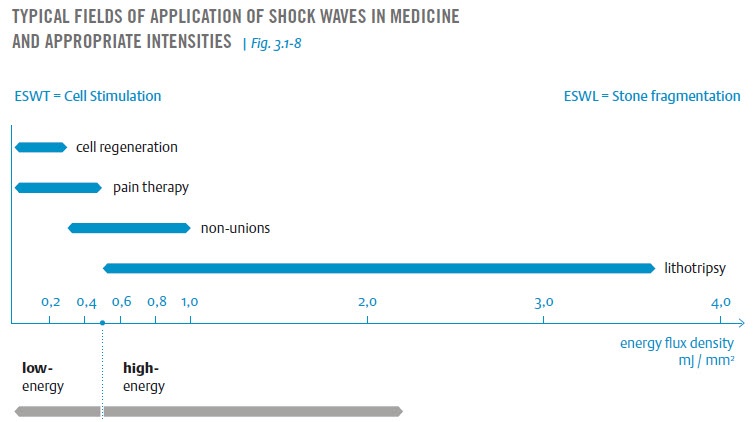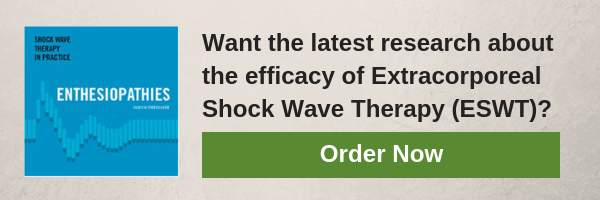Extracorporeal Shockwave Therapy (ESWT) has been an established medical treatment option for quite some time. The effectiveness of both focused and radial shockwaves has been reinforced through numerous studies, and in everyday practice, its viability as a non-invasive treatment option resulting in better patient outcomes is embraced by physicians and patients alike.
For physicians who use or are considering using ESWT in their own practices, research and learnings from like-minded professionals are invaluable.
That’s exactly what you’ll find in the Level 10 book, Shockwave Therapy in Practice: Enthesiopathies, available here as a downloadable PDF. The book, written by globally renowned Orthopedic Specialist Ulrich Dreisilker, provides key insights to doctors who treat patients with enthesiopathic conditions. For example: How do shockwaves actually work? And what do we know about the different treatment methods in everyday practice?
As Dr. Dreisilker states, “The aim of this book project is to help users find the ideal shockwave dosage and to provide them with in-depth knowledge on how to identify ESWT indications with the help of medical and differential diagnosis or imaging methods.” Dr. Dreisilker accomplishes this by taking readers on a deep dive of the following topics, as outlined below:
A Brief History of ESWT
Learn how ESWT has evolved over time, after initially being used in the 1960s for the extracorporeal fragmentation of kidney stones. Also gain insights related to mechanical energy without tissue damage, the initiation of healing processes, and how ESWT was used in the first orthopedic treatments for pseudoarthrosis. This brief history also addresses how, over time, both focused shockwaves and radial pressure waves were used for an increasingly wide range of indications.
Physical Basics
What are the physical characteristics of focused shockwaves and radial pressure waves that are used in medical practice today? This section covers in detail how they are generated, the sources used in medicine, how energy is released into the body, and the typical fields of application.

Mechanisms of Action of Shockwaves
This section will give you an idea of the theoretical models used to explain the effect of shockwaves. It explains the biological reaction of tissue caused by compressive stress, the molecular biological effects that occur within the healing process, and the physical reactions that occur within the body.
General Remarks on Treatment with Shock and Pressure Waves
Esteemed physicians Danilo Jankovic and Ulrich Dreisilker share their learnings on treatment sessions, dosages, localization of treatment and trigger points, the measurement of treatment success, and much more.
Treatment Considerations for Enthesiopathic Indications
Explore the etiology, diagnosis, diagnostic imaging and treatment considerations for both classic and extended indications that include:
|
|
|
|
|
|
|
|
|
|
|
|
Interested in the complete Level 10 book, Shockwave Therapy in Practice: Enthesiopathies? Download the full book for free as a PDF.
Questions or comments? Ask them here.



